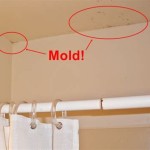How Often to Change Bathroom Sink Towels
Maintaining proper hygiene within a household necessitates consistent attention to often-overlooked details, one of which is the frequency of changing towels in the bathroom sink area. The humid environment, combined with the frequent use of towels for hand drying, contributes to an ideal breeding ground for bacteria, mold, and other microorganisms. Establishing a routine for towel replacement is crucial for preventing the spread of germs and maintaining a healthy living space.
The bathroom sink towel serves a seemingly simple purpose: drying hands after washing. However, the environment created through this repetitive process is far from sterile. Each time hands are dried, moisture is transferred to the towel. This moisture, coupled with the residual oils and dead skin cells that are inevitably deposited, creates a conducive environment for microbial growth. Furthermore, bathrooms themselves tend to be humid spaces, either due to shower steam or inadequate ventilation, which exacerbates the problem.
Understanding the potential risks associated with infrequent towel changes is essential for making informed decisions regarding bathroom hygiene. Pathogenic bacteria, such as E. coli and Staphylococcus aureus, can thrive in damp towels. These bacteria can then be transferred back to the hands during subsequent use, potentially leading to the spread of infections. Mold and mildew can also proliferate, especially in poorly ventilated bathrooms, posing a risk to individuals with allergies or respiratory sensitivities. Even if no visible mold is present, its spores can be present in the air, leading to health issues. Finally, infrequently changed towels develop a distinct, unpleasant odor, a clear indication of microbial activity and a signal that replacement is overdue.
Key Point 1: The Frequency of Handwashing Impacts Towel Hygiene
The frequency with which individuals wash their hands directly correlates with the rate at which bathroom sink towels become contaminated. In households with multiple residents, especially those with young children who may be less diligent about hygiene practices, the towels are subjected to more frequent use and, consequently, a higher degree of microbial exposure. Similarly, during cold and flu season, handwashing frequency typically increases significantly, placing an even greater burden on the towel's hygienic integrity.
Consider the scenario of a family with two working parents and two school-aged children. Each member of the family washes their hands multiple times throughout the day – after using the restroom, before and after meals, and after arriving home from work or school. This constant use leads to the rapid accumulation of moisture and organic matter within the towel's fibers. In such households, a more frequent towel change schedule is undeniably necessary compared to a household with a single occupant.
Furthermore, the type of hand soap used can also influence the cleanliness of the towel. Antibacterial soaps may reduce the initial bacterial load; however, residual soap and other chemicals can contribute to the buildup within the towel over time. It is important to note that antibacterial soaps are not always necessary for effective handwashing and may contribute to antibiotic resistance. Thorough rinsing of hands is crucial regardless of the type of soap used. The residue on the towel can also attract more dust and debris.
The level of activity within the household, the prevalent health concerns of its inhabitants, and the type of hand soap used are all crucial factors to consider when determining the appropriate frequency of towel changes. A one-size-fits-all approach is not adequate, and a more nuanced understanding of individual circumstances is required to maintain optimal hygiene.
Key Point 2: The Type of Towel Material and its Absorbency
The material composition of the bathroom sink towel also plays a significant role in its ability to harbor bacteria and retain moisture. Towels crafted from natural fibers, such as cotton, are generally more absorbent than those made from synthetic materials. While greater absorbency may seem beneficial, it also means that the towel will retain more moisture for a longer period, creating a more favorable environment for microbial growth. The weave of the fabric also plays a role in how quickly a towel dries.
Thicker, plush towels, while offering a luxurious feel, are inherently more prone to retaining moisture due to their increased surface area and density. These towels take longer to dry completely, further increasing the risk of bacterial proliferation. Conversely, thinner towels, although less absorbent, dry more quickly, potentially reducing the risk of microbial growth to some extent. However, thinner towels may require more frequent washing as they become saturated more quickly.
Microfiber towels are becoming increasingly popular due to their superior absorbency and quick-drying properties. Microfibers are synthetic fibers that are much finer than natural fibers. This allows them to absorb more water and dry faster than a cotton counterpart. These towels can be a good choice for bathroom sink towels as long as they are washed frequently.
The user must also consider the towel's color. Dark-colored towels may mask the presence of stains or discoloration, delaying the recognition of when a towel needs to be laundered. Conversely, light-colored towels make it easier to identify dirt and grime, prompting more frequent washing. However, darker towels can mask the build-up of bacteria and mildew, so it is important to be vigilant regardless of color.
Key Point 3: Proper Towel Handling and Drying Practices
Even with frequent towel changes, improper handling and drying practices can negate the benefits of a regular cleaning schedule. After each use, towels should be hung in a manner that allows for adequate air circulation. Bunching up a damp towel or leaving it in a pile on the counter creates a stagnant environment conducive to microbial growth. Ideally, towels should be hung on a towel rack or hook where all surfaces are exposed to air.
Ensuring adequate ventilation within the bathroom is also crucial. Running the exhaust fan during and after showering or bathing helps to reduce humidity levels, ultimately promoting faster towel drying. If an exhaust fan is not available, opening a window can provide similar benefits. It is also beneficial to avoid placing damp towels in direct sunlight, as this can accelerate microbial growth and fade the towel’s color.
Separate hand towels for each individual using the bathroom can significantly reduce the risk of cross-contamination, particularly in households with multiple residents. This is especially important during illness. Assigning specific towels to each person minimizes the transfer of bacteria and other microorganisms between individuals. These towels should be easily identifiable, whether by color, pattern, or placement.
Implementing a system for rotating towels can further enhance hygiene practices. This can be as simple as designating a specific day of the week for changing all bathroom sink towels. Regularly inspect towels for signs of mildew, discoloration, or an unpleasant odor. These factors are all indications that the towel needs to be replaced, regardless of the established schedule.
In addition to regular washing, ensure towels are properly cleaned. High heat washing is recommended to kill bacteria. Ensure all water is wrung out of the towel before placing in the dryer. Do not leave damp towels in the washing machine for long periods of time as this can promote bacteria growth in the machine and on the towel.
It is typically recommended to wash towels separate from other clothing. This can prevent cross-contamination and ensure the towels are properly cleaned. Do not overload the washing machine, as this can also prevent the towels from being fully cleaned. Proper detergent usage is also necessary. Using too much or too little detergent can result in unclean towels.
Ultimately, determining the optimal frequency for changing bathroom sink towels is dependent on a variety of interconnected factors. Considering the frequency of handwashing, the type of towel material, and the implementation of proper handling and drying practices will enable individuals to establish a sustainable routine that promotes optimal hygiene and minimizes the risk of microbial contamination. A practical approach combines a scheduled change interval with visual and olfactory assessments of towel cleanliness to determine the appropriate course of action. While there is no absolute rule, erring on the side of caution is always advisable when it comes to hygiene.
How To Know When It S Time Replace Your Towels Modern Bathroom

How Often Should You Replace Towels Shower Curtain Liners More Bathroom Essentials Parachute Blog

How Often Should You Wash Your Towels And Bathmat

How Often Should You Change Wash Your Towels

How Often Should You Replace Common Bathroom Items Olivia Rocco

How And Often To Clean Your Towels Reviews By Wirecutter

How Often Should You Change The Towels And Why

Changing Towels In The Bathroom Villeroy Boch

This Hand Towel Will Change Your Life Diy Danielle

Almaira De Jonge On Instagram How Often Should You Change Your Towels Me Bath Towel 3x A Week Face Everyday
Related Posts







